Why your content marketing is failing (and what to do about it)

Is your content marketing achieving your goals?
For the majority of you, the answer is probably no – just 28% of Australian companies who use content marketing believe they are effective at it.
Despite this, more than 80% are committing time and budget to content – time and money which is wasted if it’s not having the desired result.
Documenting your content marketing strategy can help improve your return on effort. In fact, 73% of the most effective content marketers have a documented strategy.
So how do you create a solid content marketing strategy that increases your effectiveness?
Well, that depends on what your goals are.
The first and most important thing to do is determine your goals, because your strategy needs to be tailored to suit them.
According to a Content Marketing Institute report, some of the most important goals and metrics for Australian content marketers are:
- engagement
- brand awareness
- lead generation
- SEO ranking
While the strategies for achieving these may overlap (and great content can achieve all of the above), there are some unique ways to pursue each of these goals individually.
In the rest of this article we’ll take a look at some strategies for achieving each primary goal, plus some examples of businesses that are doing it well.
Note: Whatever your aim, your content needs to be exceptional if it is to succeed – and that means it needs to offer something over and above the content that is currently available on the topic.
Goal 1: Engagement
What is it?
Engagement means that not only are you getting eyeballs on your content, you’re also getting people to engage with your brand. They’re actively responding to something you have shared, and whether that’s through ‘liking’ a post, commenting on it, or sharing it themselves, it helps more people from their network find the content too.
How do you measure it?
Engagement metrics are the likes, comments, shares, retweets, favourites, and any other type of interaction a post may receive. These metrics allow you to immediately understand what is resonating with your audience and what isn’t, so you can adjust the tone and topics of your content going forward.
We use SumoMe – a simple and customisable widget (you can see it in action on this page) which tracks how many social shares a post has had. It also displays this for all new visitors to see – letting them know your post is worth checking out.
For more detailed analysis and comparisons of posts, you can use the various social media platforms’ tools, like:
- Facebook Insights
- Twitter Analytics
- LinkedIn Company Page Analytics
- For Instagram, you’ll need to use an external platform, like Pikore or Iconosquare
How do you choose the right topics for engagement?
When looking to create a piece of content that gets a lot of engagement, start by researching the types of topics that have seen proven success.
Use Buzzsumo to search for a bunch of keywords related to your offering, and make a list of at least 20 relevant pieces of content that have received a lot of shares.
Here’s an example of what the start of that list may look like for fitness-related keywords:

You should also research who you will be competing with for engagement. These will be the big players in your industry – including your direct competitors, as well as others who produce related content (eg industry publications, blogs, websites).
So if your business was, for example, a gym, you could look for:
- competing gyms that have a blog presence
- brands selling other fitness-related products (like clothing and accessories) that have a blog presence
- content-specific sites that cover fitness-related topics, like ‘Body and Soul’, ‘Men’s Health’ or ‘Greatist’
Do a search for each of the relevant URLs from these sites in Buzzsumo to see what their most popular content is. Include this popular content in your list too.
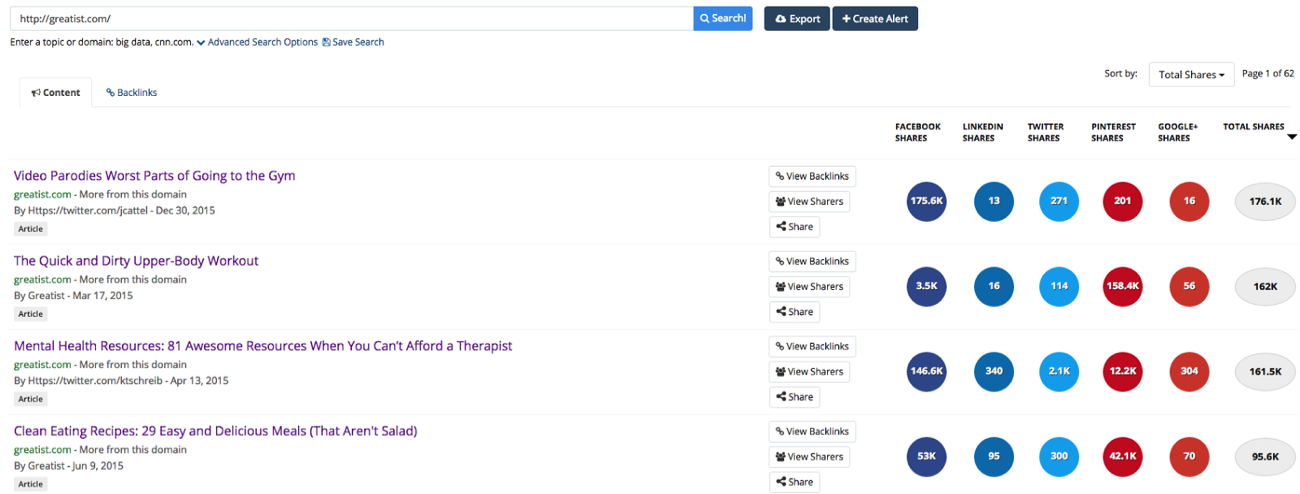
Take note of the format of the most popular content (is it an infographic? video? list?) as well as any themes in the type of topics that feature regularly.
For example, common themes in the most shared list for fitness might include:
- workout routines
- scientific discoveries around health and exercise
- food and recipes
- losing weight
- personal stories
Concentrating on those types of topics is a pretty safe bet if you want to achieve strong engagement from your audience (keeping in mind that you have to offer something over and above what the existing posts already have).
You should also take note of where the majority of shares are coming from – you can see in the screenshot above that ‘Greatist’ receives a lot of shares on Pinterest and Facebook – suggesting that these are good platforms for fitness brands to use when it comes to promotion.
Who’s doing it well?
So what’s an example of a brand that’s getting good engagement on their posts?
G Adventures writes on a broad range of travel-related topics which resonate strongly with their target audience and so, receive strong engagement.
This post on 7 of the World’s Greatest Treks has received over 21k social shares and several comments.
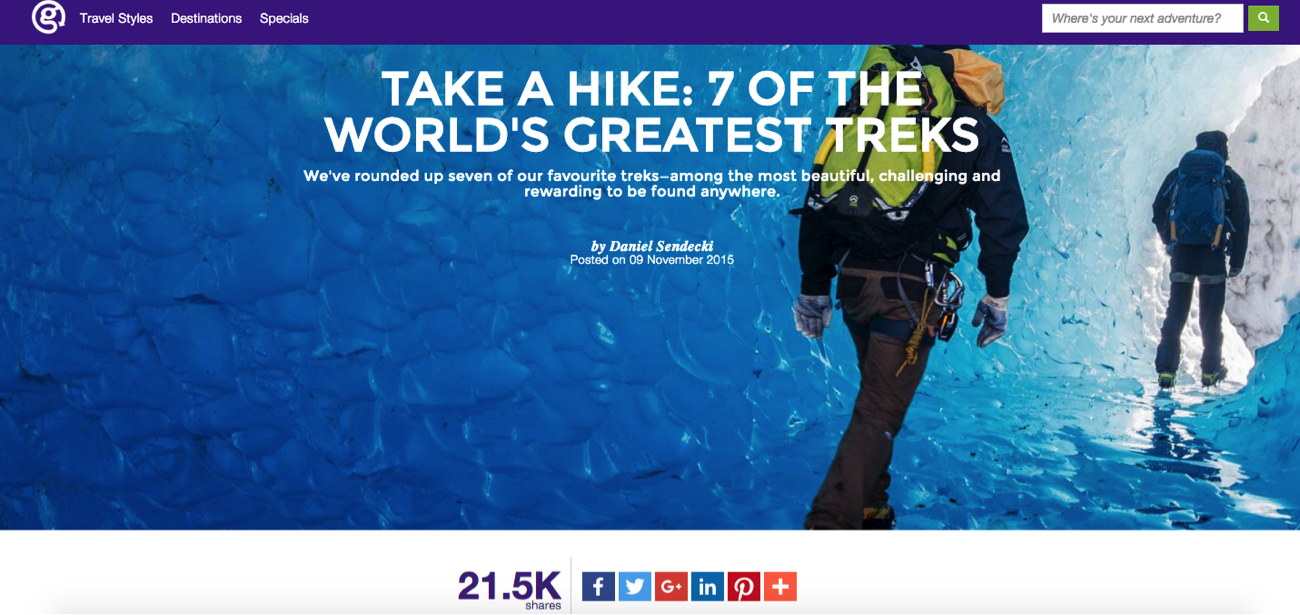
A quick search of their website on Buzzsumo shows their top seven posts for engagement are similar list style articles with a strong emphasis on beautiful imagery of landscapes around the world.
It’s clear that they have figured out what their audience responds to, and are able to replicate it from various different angles.
Goal 2: Brand Awareness
What is it?
Brand awareness is about getting your name out there – having people who otherwise may not have recognised you get to know who you are and what you stand for.
But that doesn’t mean that it’s all about you.
In fact, content that’s really successful at getting your brand name out there is rarely about you at all.
You may think that informing people about the benefits of your product is the aim of the game, but in fact, content that raises your brand’s profile should be created first and foremost for the enjoyment and interest of your audience (without expecting a sale in return).
That’s because people who don’t even know who you are will not be ready to hear all about what makes you so great.
But they may be open to hearing a story (that just so happens to represent what you stand for). They can do their research to find out more about what you do once you’ve captured their attention.
James O’Brien described this kind of content well in an article on Mashable when he said:
“The idea central to content marketing is that a brand must give something valuable to get something valuable in return. Instead of the commercial, be the show. Instead of the banner ad, be the feature story. The value returned is often that people associate good things with — and return to engage with — the brand.”
How do you measure it?
Brand mentions tell marketers how many people are talking about them across the web. They can be measured by various social media monitoring platforms including Brandwatch and Sysomos, among others. These platforms also allow brands to analyse their competitive position in relation to other brands in the industry.
You can also create your own notification system for your brand name using Google Alerts, so you know when people are talking about you.
A large number of impressions is another good sign that many people are seeing your content and your brand. You can track this on the different platforms where your content is seen – for example, you could track traffic to your blog or video.
How do you choose the right topics for brand awareness?
For a piece of content to reach far beyond your regular audience and increase your brand awareness, it needs to be something that really wows.
It needs to tell a story – and tell it in the right format.
What kind of authentic or heart-felt story could you relate to your brand’s central purpose?
The most successful pieces of content in this realm are:
- shocking – the kinds of things that make your jaw drop
- emotionally moving – the kinds of things that bring a tear to your eye
- entertaining – the things that make you laugh or smile
Great brand awareness pieces also challenge the status quo. This could mean publishing them in an untested channel or utilising a new format (like this children’s book created by enterprise tag-management provider Tealium as a souvenir for trade show attendees). It could also mean taking on a tone that stands out from what others are doing (like the Old Spice guy who injects humour into body wash). Being different creates enormous cut through and makes you more memorable.
Another way to get your brand out there through your content is through influencer marketing. Find existing influencers in your industry whose business you could potentially complement. Offer to write something on their blog, or write about them on your blog and reach out to them to let them know – hopefully they will share your content with their large network.
Who’s doing it well?
For a long time, Red Bull has been the poster boy of content marketing, and with good reason. Not only were they pioneers, understanding the importance of content way before almost anyone else, but to this day, they remain one of the most shining examples of using content to raise their brand profile without pushing products or sales. In fact, it’s been said that “Red Bull is a publishing empire that also happens to sell a beverage” – and one look at their website home page confirms that idea.
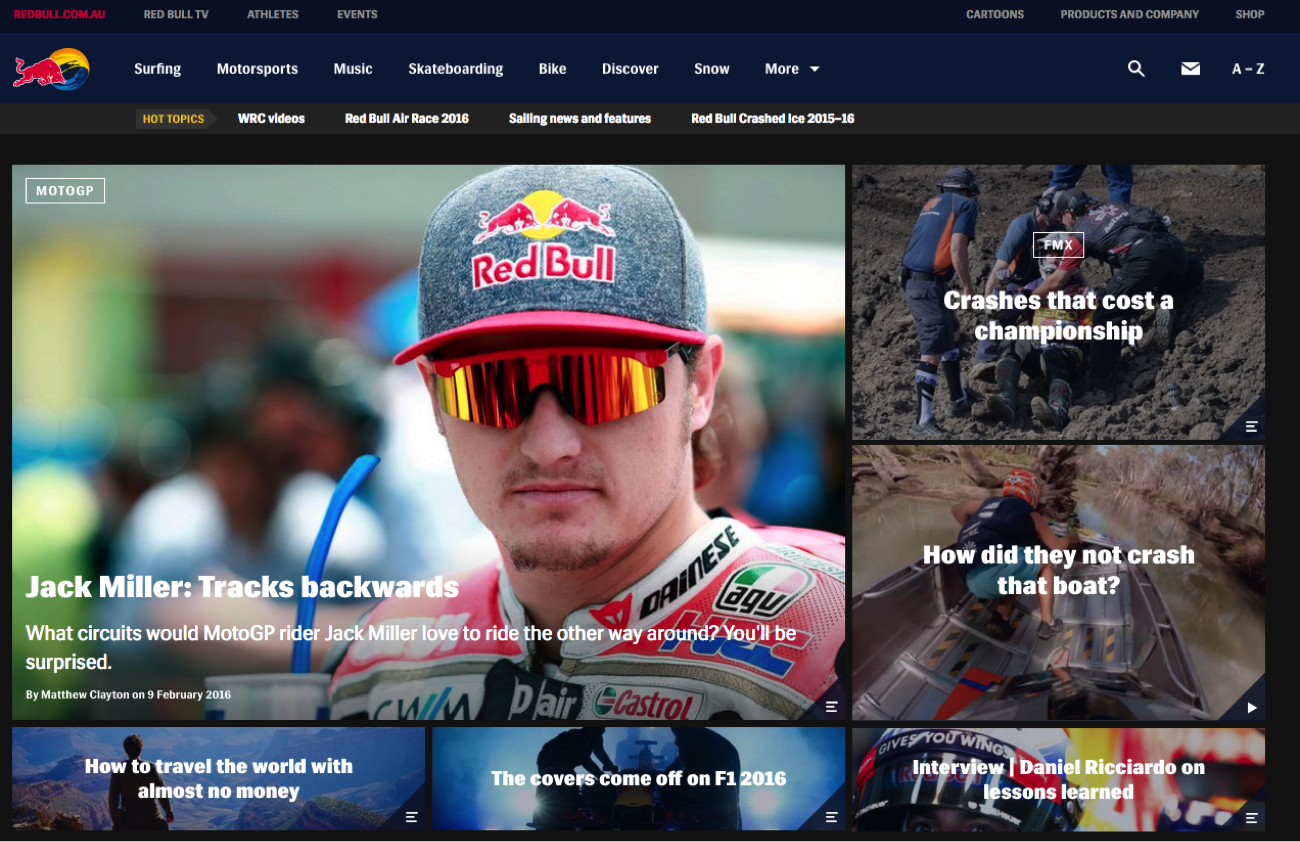
From videos of Travis Pastrana performing stunts to stories about street art in New Orleans, Red Bull is a master at producing content that really has nothing to do with their product, and yet, everyone has a clear idea of who they are and what they stand for.
Another example of this type of content comes from Dove. They created a video where an FBI sketch artist drew women as they described themselves, and then as someone else described them. The results were surprisingly different, and the responses in the women extremely emotional, leading to the final comment and title of the video “you’re more beautiful than you think”. The video went viral, and while Dove was only mentioned with their brand logo at the end, this is exactly the kind of content that gets people talking.
In a piece of content that went similarly viral, modular architectural company Modscape created an original conceptual design for a five-storey modular home that clings to the side of a cliff. The highly original ‘Cliff House’ concept began to be posted all over the web.

The concept – and their brand name – has been featured on Channel 7 News, news.com.au, Business Insider, Mashable and the Daily Mail UK, amongst several architectural and design websites and thousands of other places across the internet.
Goal 3: Lead Generation
What is it?
Lead generation is the process of attracting and converting a stranger into a person who has indicated interest in your company. It’s a way of warming up potential customers to your business and getting them on the path to eventually buying.
HubSpot claims that B2B marketers who use blogs receive 67% more leads than those who don’t. Blogging helps you attract high quality leads by providing your target audience with a space to learn more about you and discover how much you know about what you do.
There are many ways to convert a visitor to your blog into a lead who you can contact directly. The most effective is to give away some kind of resource for free and ask the prospect to hand over their email address in exchange for access.
This could be:
- a white paper
- an ebook
- a special report
- a PDF version of an in-depth article
It could also be a content upgrade – something which enhances what’s already available in a blog article.
Some examples of content upgrades include:
- a PDF checklist that simplifies the content displayed in the post
- a downloadable template that allows you to recreate a technique in the post
- extra list items that weren’t included in the post
Not only does this help you build your email list, but by flaunting your expertise through useful content, you help prospects better understand how you’re equipped to solve their specific problems.
How do you measure it?
Lead generation is pretty simple to measure – just track how many email addresses you receive from each campaign.
You can collect email addresses through a tool like LeadPages, or you can create an opt-in form in MailChimp (or whichever CRM and email software you use).
How do you choose the right topics for lead generation?
For your leads to be qualified and your campaign to be effective, the resource you create should be something that your target audience needs. It should be extremely useful – otherwise your audience is simply going to be annoyed that you wasted their time and took their email address in the process.
One thing to consider when choosing a suitable topic is, what questions do people typically want answered before they make a decision to purchase from you?
By supporting their research process – by perhaps debunking commonly held myths – your content can help steer them in your direction and make them feel more comfortable that they are making the right choice.
If you’re not sure what kind of questions people are asking in relation to your offering, Google’s Keyword Planner is a good place to start.
Enter a keyword related to your product or service and under ‘keywords to include’, enter question-based keywords.
For example, if you’re selling ‘baby formula’, enter that as your product or service and then under ‘keyword’s to include’, list:
- what
- when
- how
- why
- who
- should
- if
- can
- do
Click ‘Get Ideas’. Under the ‘Keyword Ideas’ tab you should see some query-based searches and how common they are.
If you already have a great deal of content on your blog, you could also choose a topic based on what is already getting a lot of traffic. Search in Google Analytics to see what is getting the most traffic – as I did below for the Webprofits blog.

Once you’ve picked a page that’s getting a lot of traffic, tailor an upgrade specifically to that topic – so it’s exactly what the user was looking for when they landed on the page (meaning they’re much more likely to give up their email address than they would be if you, say, created one generic ebook and included it at the bottom of all your posts).
As you can see from Webprofits’ Analytics, our review of The Iconic’s online marketing strategy is by far our highest trafficked page on the blog. That’s why we added this content upgrade to it – an 81-point Conversion Rate Optimisation Checklist for Ecommerce Sites.
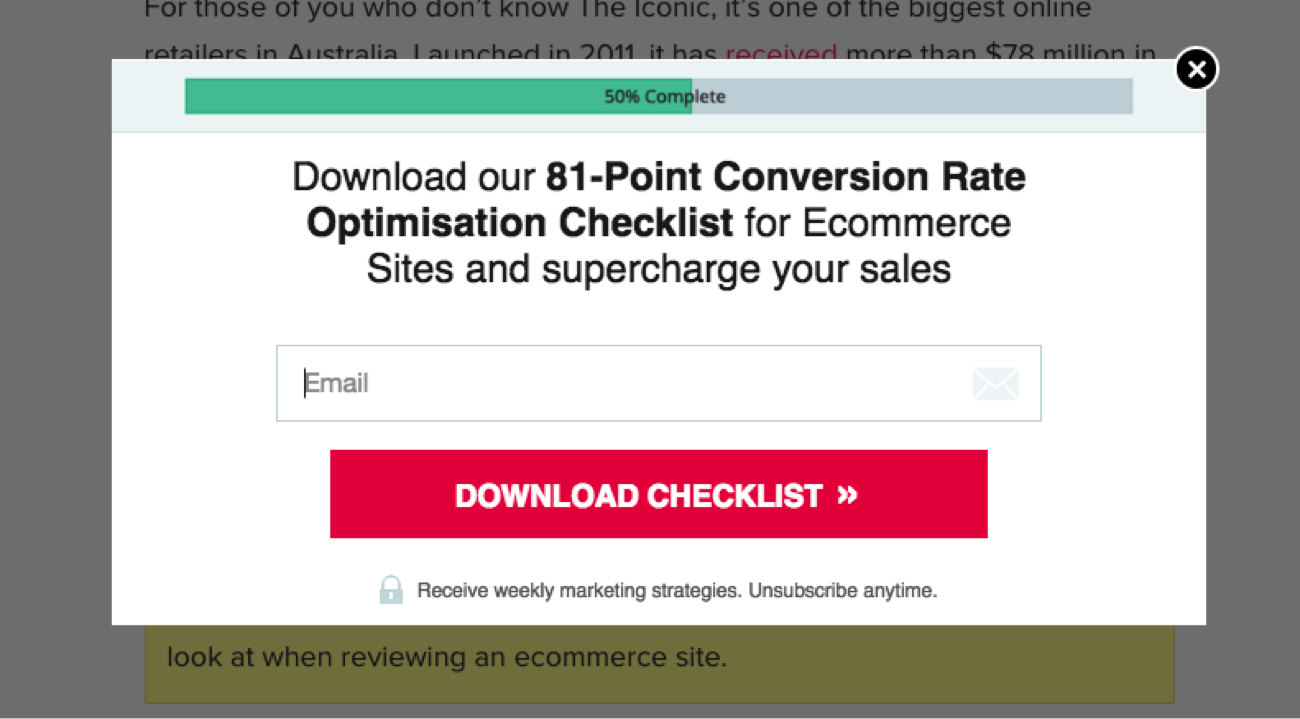
Who’s doing it well?
It’s hard to go past Brian Dean of Backlinko when it comes to an example of this type of content. In this article he describes how adding a content upgrade to one of his posts increased conversions by 785%. The post he’s talking about is his list of Google’s 200 Ranking Factors, where he provides an upgrade of a simplified checklist of the 10 most important ranking factors.
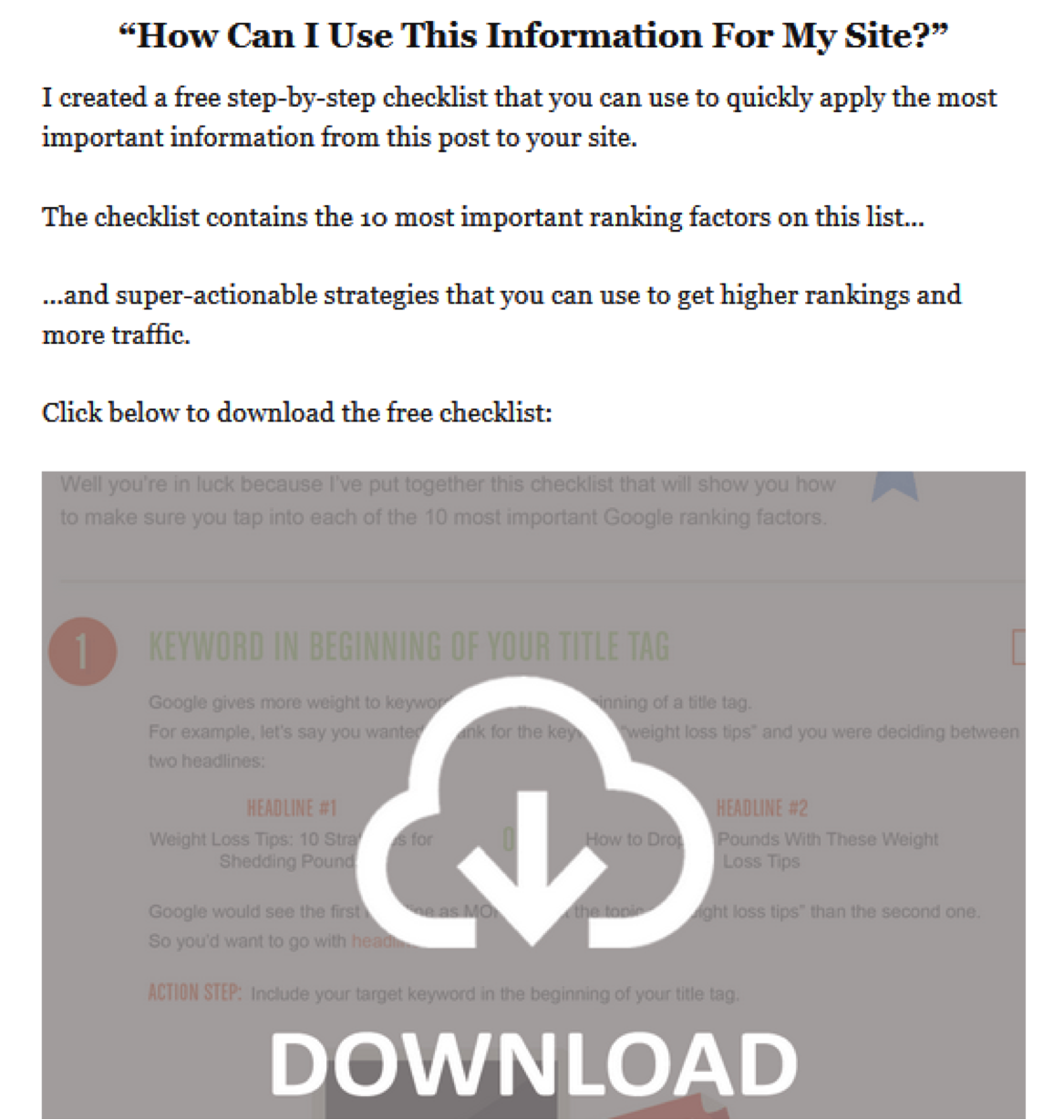
Hubspot provides another good example, with this article – 5 Infographics to Teach You How to Easily Make Infographics in PowerPoint – which features a content upgrade of 15 free infographic templates you can use in PowerPoint.
This particular upgrade has been utilised across several relevant articles, including these:
- 10 Traits of Amazingly Awesome Infographics
- 11 of the Best Infographic Designs of 2015
- Why are Infographics so Darn Effective?
The download is featured as a slider which pops in as you scroll:
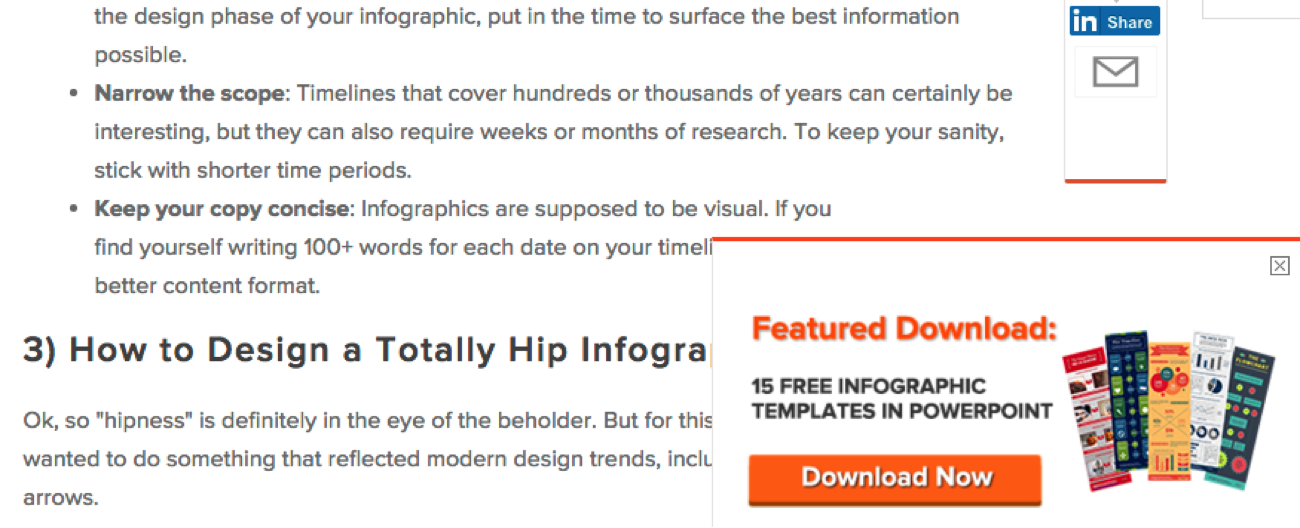
And also as a feature at the bottom of the article:
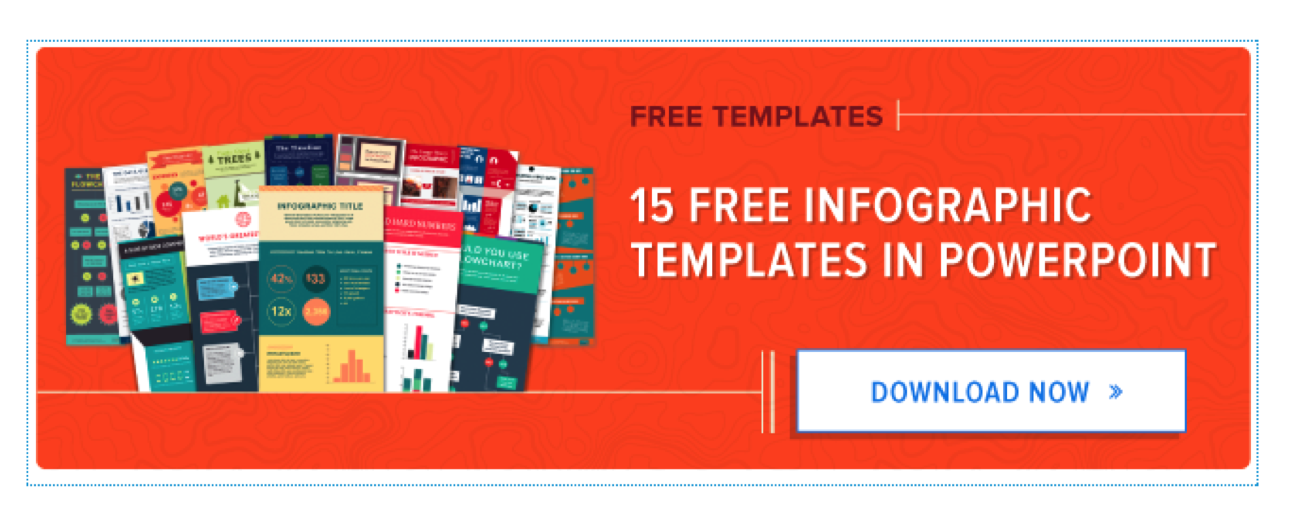
Their lead generation form is more in-depth than just putting in your email address – but the offer is compelling enough for you to take the time to fill in details like your company’s name, how big it is, your role and department, and your biggest marketing challenge. This provides invaluable data for them, and an added bonus is that it allows them to tailor their thank you page to you.
Here’s what you’re shown once you download the template – some information on how their product can help you get more from the content upgrade. (Notice they mention my company by name – a nice tactic to pique someone’s interest.)
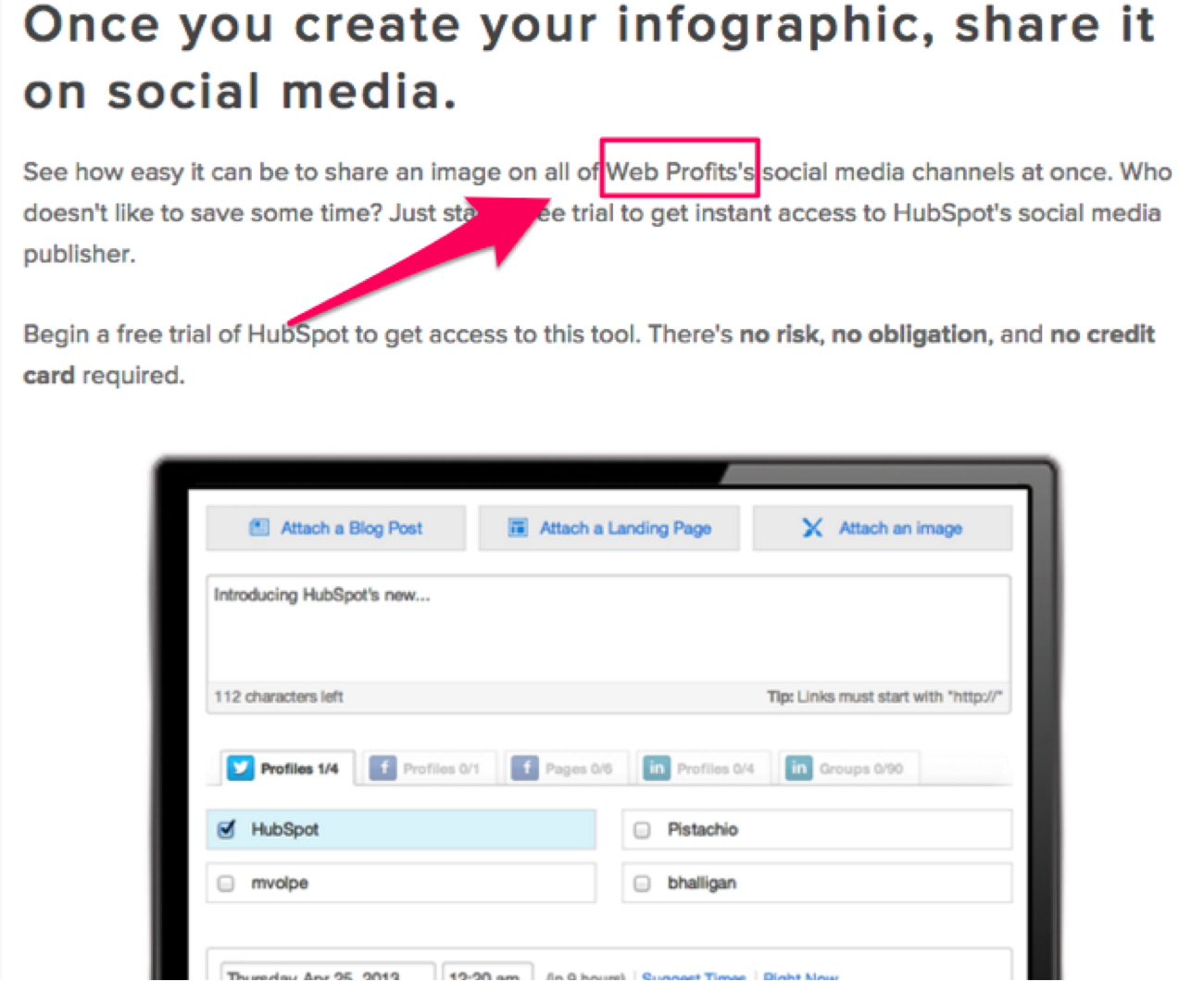
Goal 4: Search Engine Optimisation (SEO) Ranking
What is it?
There are so many signals that Google’s algorithm takes into account when deciding where to rank websites for keywords in their search engine. This means there are many tactics that you can use when writing content for SEO purposes – and there are specific ways to go about choosing the right topics for each of these.
One of the most important things you can do to improve your SEO rankings is to increase the number of natural links pointing to your site, so we’ll focus on that here.
How do you measure it?
Tools like Majestic and Ahrefs allow you to measure the number of backlinks to a URL or an entire site.
How do you choose the right topics for SEO?
The topic you choose for a piece of link building content needs to be so incredible, or so useful, that people in your field will feel compelled to link to it. This is not as easy as it sounds, and unfortunately, something that you (or even your customers) find super interesting may not be what those who are linking out in the industry find interesting.
One of the easiest ways to ensure you choose the right topic is by finding out what topics have seen proven success (this is what Brian Dean calls the Skyscraper Technique).
You can use Ahrefs to find the most linked-to content, in a similar way to how you used Buzzsumo to find the most shared content when choosing topics for engagement.
In Ahrefs, use the ‘Content Explorer’ section to search for keywords related to your service. Look at the number of referring domains, and begin creating a list of topics in your industry that have received many backlinks (they should have at least 25 referring domains).
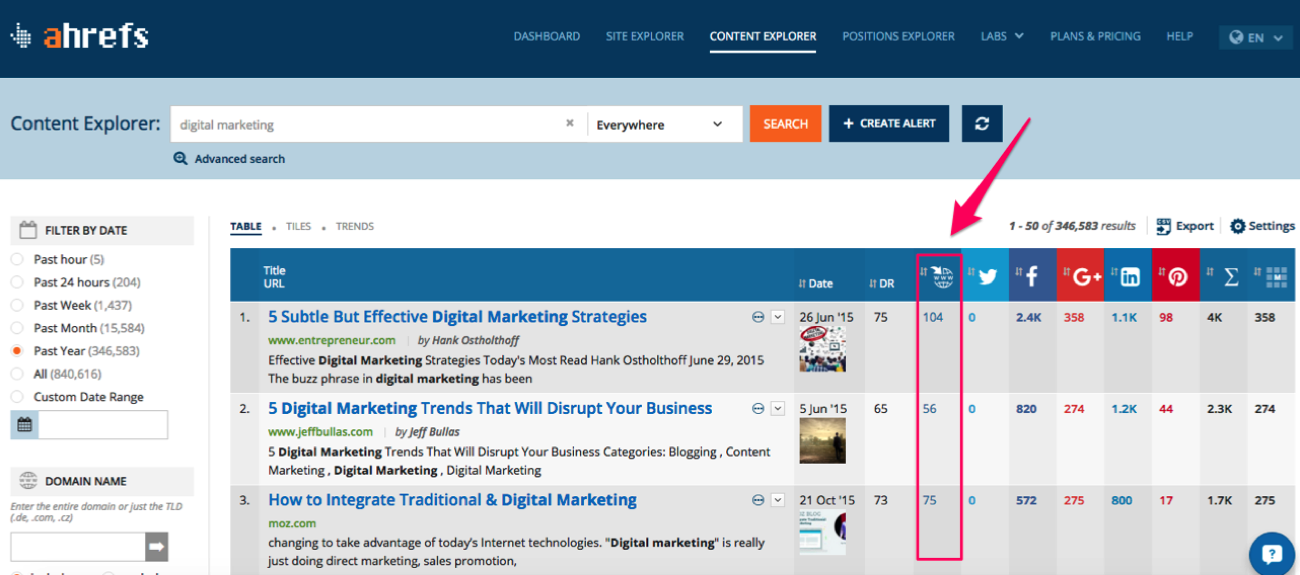
Once you’ve tried several keywords this way, you can also search well-known industry sites and competitors in Ahrefs under ‘Site Explorer’. Enter their domain and then select ‘Top Pages’. Include pages that have a lot of backlinks in your list as above.
Choose a topic from the list, and create a piece of content around that topic which significantly improves upon the already existing resource.
Being the best available resource may mean:
- collating information that’s currently fragmented into one convenient place
- updating the information that is currently available
- covering the topic in more depth
- changing the angle to be more relevant to your niche
- creating a much more pleasing design that is easy to read or view
Content promotion is always important if you want anyone to see what you created, but for this type of content in particular, you’ll need to conduct manual outreach to those who link out in the industry (including influencers, top bloggers, and some of those who linked to the previous piece of content on the topic) to let them know about your new resource.
Who’s doing it well?
Budget Direct is a great example of a brand that makes content that’s extremely engaging, in-depth and useful, and as a result they have tons of links pointing to their blog.
Their most linked to article – Digital Safety: Staying Safe Online – is currently showing 183 referring domains.
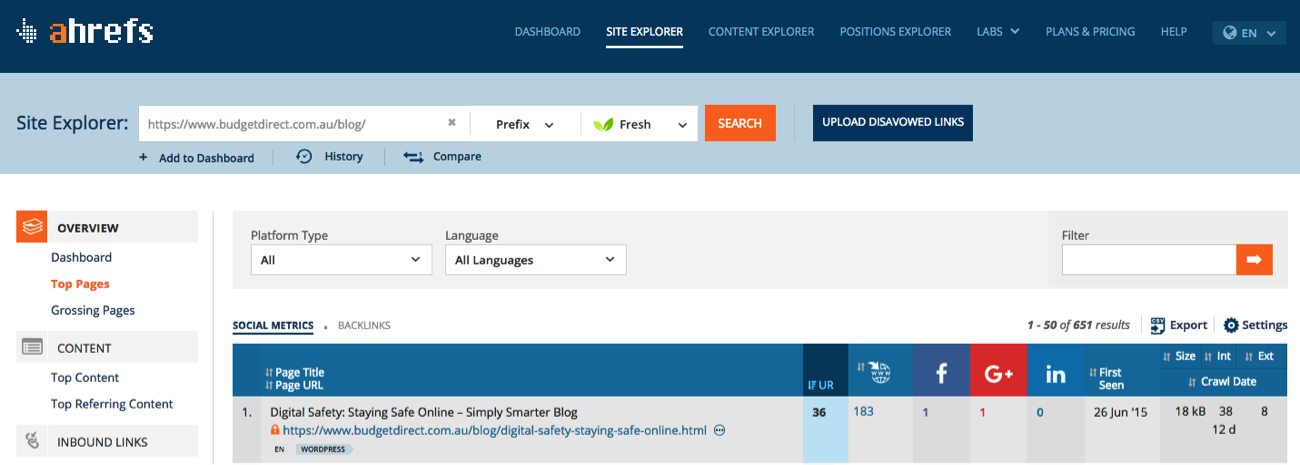
As well as the in-depth posts they publish regularly on their blog, they’ve created a number of interactive pages including this guide to Hazards in the Home (with 135 referring domains) and this guide to What to Pack for Your Next Vacation (with 107 referring domains).
Which goal is most important for your business?
By now it should be clear that the strategies for choosing the right content topics vary greatly depending on your goals.
With a documented strategy that highlights the most important goals for your content, you can create much more targeted and relevant content in the right format.
Do you have any other goals for your content? Share them in the comments below.





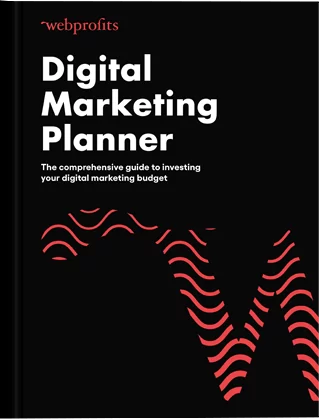
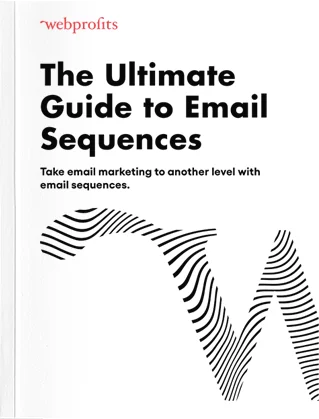
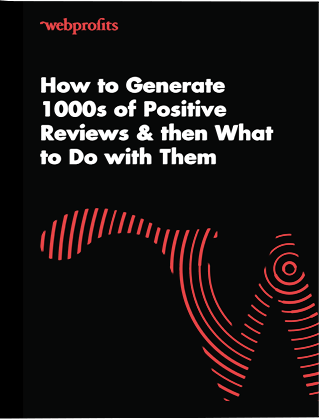
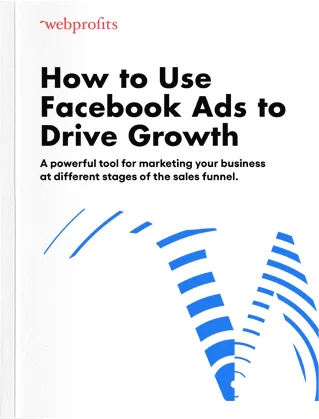
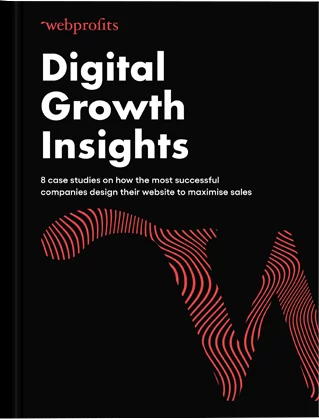
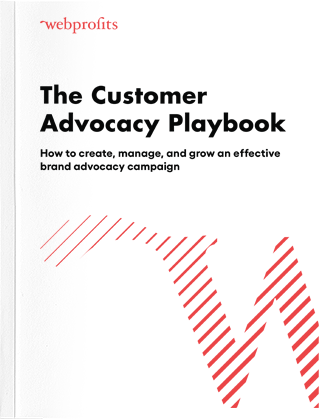


Well done Sophie for a great write up. I am glad that I am on the right track 🙂
Jennifer Nini
Founder
[…] shown in our recent article Why Your Content Marketing is Failing, here is an example of what such a list would look […]